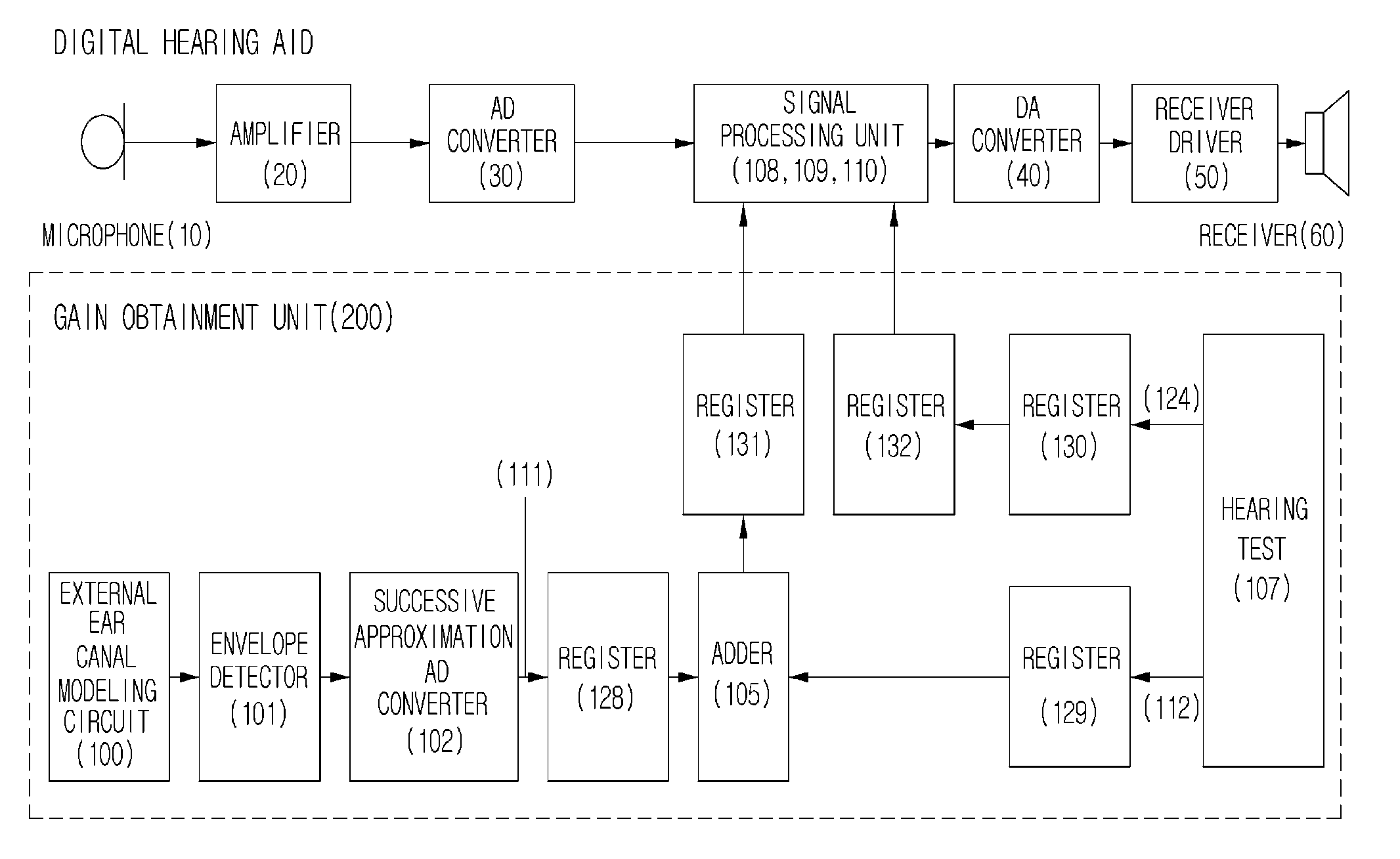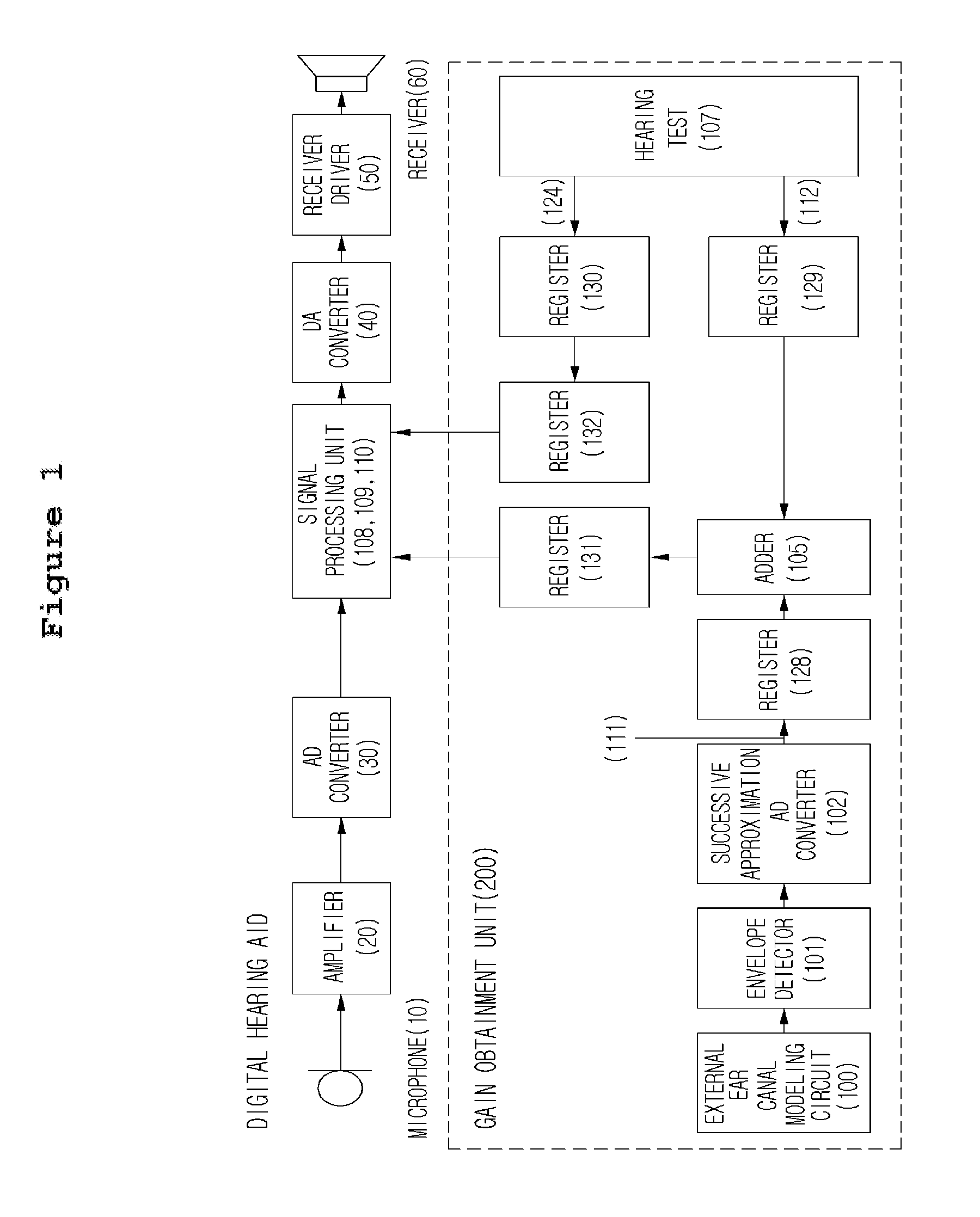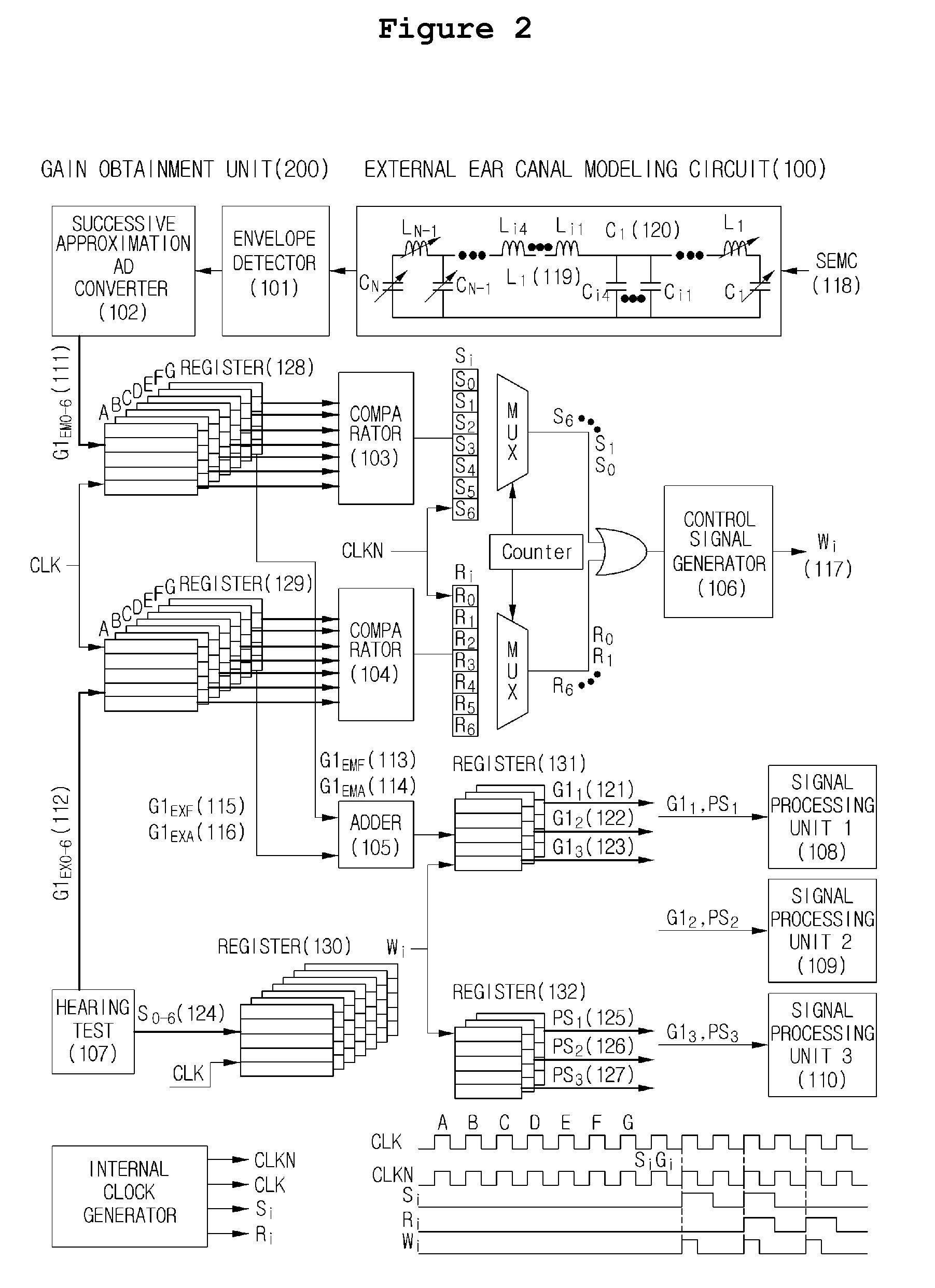Digital hearing aid adaptive to structures of human external ear canals
a technology hearing aids, applied in the field can solve the problems of inability to normally perform social activities, inability to adjust inability to adapt to the structure of external ear canals, so as to optimize the performance of digital hearing aids for each individual, the time required for gain fitting and possible errors can be reduced.
- Summary
- Abstract
- Description
- Claims
- Application Information
AI Technical Summary
Benefits of technology
Problems solved by technology
Method used
Image
Examples
Embodiment Construction
[0033]Hereinafter, embodiments of the present invention will be described in detail with reference to the attached drawings, and the same reference numerals are used throughout the different drawings to designate the same or similar components. Further, the embodiments are not intended to limit the scope of the present invention, but are intended to exemplify the present invention. Those skilled in the art will appreciate that various modifications are possible.
[0034]FIG. 1 is a block diagram showing the construction of a digital hearing aid according to the present invention, and FIG. 2 is a circuit diagram showing the gain obtainment unit of the digital hearing aid according to the present invention.
[0035]As shown in FIG. 1, the digital hearing aid includes an amplification unit 20 for amplifying an external voice signal, input through a microphone 10, an Analog / Digital(A / D) converter 30 for converting the analog signal, amplified by the amplification unit 20 into a digital signal...
PUM
 Login to View More
Login to View More Abstract
Description
Claims
Application Information
 Login to View More
Login to View More - R&D
- Intellectual Property
- Life Sciences
- Materials
- Tech Scout
- Unparalleled Data Quality
- Higher Quality Content
- 60% Fewer Hallucinations
Browse by: Latest US Patents, China's latest patents, Technical Efficacy Thesaurus, Application Domain, Technology Topic, Popular Technical Reports.
© 2025 PatSnap. All rights reserved.Legal|Privacy policy|Modern Slavery Act Transparency Statement|Sitemap|About US| Contact US: help@patsnap.com



